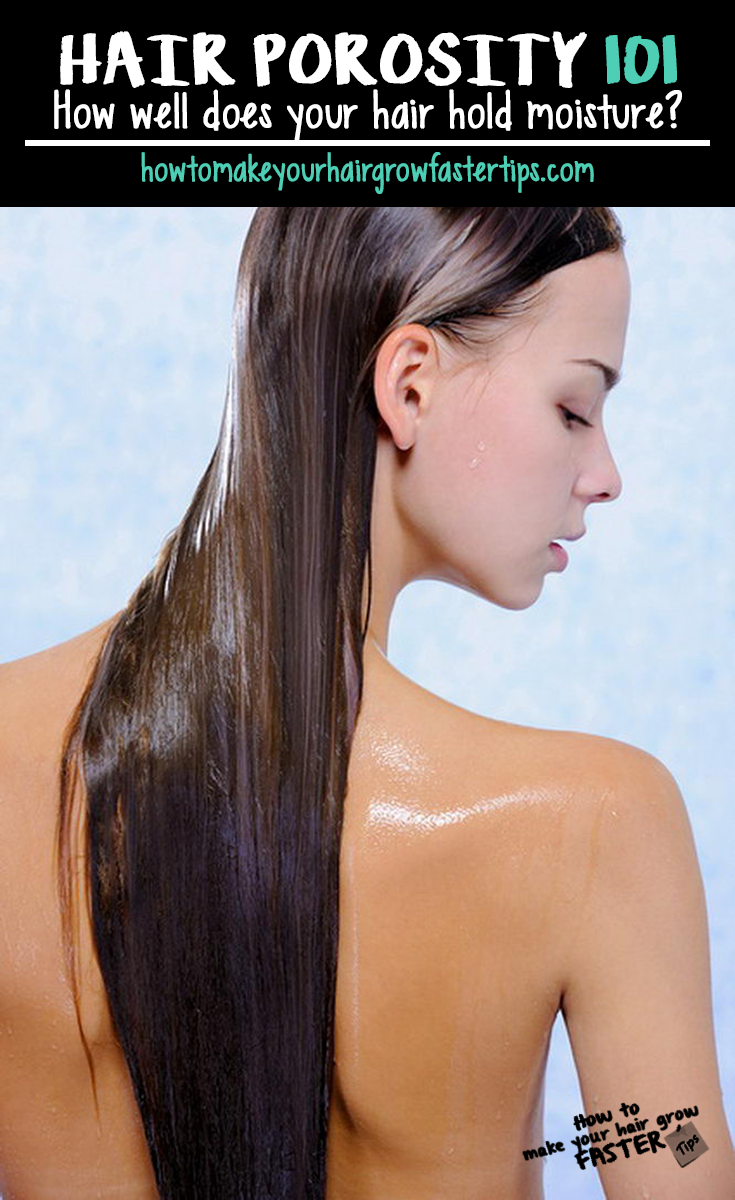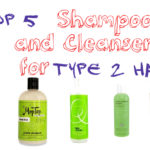
Hello Lovelies! I always strive to tie in a bit of science into most of my hair care advice, because it was ultimately the science behind hair, it’s structure, and how to care for hair that finally enabled me to grow my hair long. Well today, I ask you to recall a bit of grade school science to fully grasp the idea of hair porosity. In general, porosity is the measure of empty spaces in a material. Any medium that has pores, voids or openings, has a porosity. Since the cuticle layer of the hair strand can open and close to allow the passage of water and other substances into the inner workings of the hair strand, human hair is a porous medium.
What is Hair Porosity?
Hair porosity is human hair’s ability to absorb water and other chemicals beyond the cuticle layer and into the hair’s cortex. All human hair is porous, but depending on your hair’s current health and condition, and the integrity of the hair’s cuticle layer, the degree of permeability will differ. Similar to growth rate and other aspects of human hair, our porosity level is inherited and determined by our genetic makeup, but external factors, such as heat styling and hair dyeing, can alter your hair’s porosity level. Let’s think of hair porosity like a sponge.
A sponge has pores from which it can absorb water, swell with moisture and become super flexible. A sponge can also release water through its pores, and the rate at which it releases water depends on how old the sponge is and how often it has been used. A brand new sponge fresh out of the package will adsorb water and retain or hold water much better because it hasn’t gone through the wear and tear of an older sponge. As you use the new sponge and it becomes worn and tattered, it’ll take up water, but it releases water almost as fast as it absorbs it because the worn sponge has more holes and missing pieces. Human hair isn’t much different.
Hair porosity is measured in levels, low porosity, medium/average porosity, and high porosity. Hair strands with a cuticle layer that conforms well to the cortex are considered medium porosity. Hair strands with a cuticle layer that hugs the cuticle layer very tightly are considered low porosity. Hair strands that have chips, cracks and outright holes in its cuticle layer are considered high porosity or highly porous. Now remember your hair’s porosity level is genetic, but the way you manipulate your hair that can also affect it’s porosity level.
For example, high porosity hair can be inherited or your hair can become highly porous due to chemical damage from hair bleach, a relaxer, or some other chemical process. How can hair become highly porous? Your hair can start out with a normal porosity, but the the damage from everyday styling to frequent use of heat, chemicals and all other bad hair care practices can cause the cuticle layer on anyone’s hair strands to break down overtime. As the cuticle layer loses shingles and sustains irreparable damage, it loses it’s ability to protect the cortex and the delicate inner workings of the hair strand are always exposed and susceptible to more damage.
How to Test for Hair Porosity
So how does one test porosity? Well, there are quite a few “tests” out there, but I don’t think most of them are too accurate. The most popular porosity “test” out there is the float test. The float test involves placing a strand of freshly cleaned and dried shed hair into a cup or bowl of water and waiting a few minutes to see what the hair strand does. If the hair strand floats, this supposedly indicates low porosity hair, but if the hair strand sinks, this indicates high porosity hair. This “test” is inaccurate for a few reasons.
- Hair is less dense than water, so naturally it’s going to float in water.
- Water has a high surface tension, this is simply the attraction water molecules have to each other. The surface tension is so strong in water, it almost creates a film over water that is hard to break, so objects that have a lighter density than water certainly will not penetrate water’s surface tension and most likely will float.
- Most hair has oil residue left behind, even after it’s cleaned sometimes. We know that oil repels water, so if your hair is coated with oil, it’s going to float in a cup or bowl of water.
The most accurate test for hair porosity, gas sorption, is a lab-based test that the average person doesn’t have access to. This test involves measuring the flow of gas/air through the hair to determine the volume of holes in the hair strand in comparison to the total volume of the hair strand. Gas sorption tests have been used to prove that certain chemical processes and UV exposure alter the porosity of the hair strand.
Even though gas sorption tests aren’t readily available to most people, you can still gauge your hair’s porosity level. So how do you do it? Simple. Study your hair. Examine your hair strands for shine, reflectivity, how well they retain moisture, and examine how your hair responds to products. One of the easiest ways to gauge your hair’s porosity is the Strand Slide Test. Simply grab a few strands of your freshly cleaned and air dried hair, and note what you feel as you run your fingers down the strand.
Hair Porosity Test Results
Low Hair Porosity
Does your hair feel smooth and balanced as you run it down your hair strands? Then you most likely have low porosity hair. Hair that is really shiny and not exposed to: frequent brushing, heat styling tools, bleach or hair dye, or the harmful UV rays of the sun is also most likely of low porosity. Low porosity hair is for the most part is really healthy. The cuticle layer is usually healthy and intact, and the cuticle layer hugs the hair’s cortex very tightly.
The downside of low porosity hair strands is the fact that it tends to repel water, oils, and conditioners, and the hair doesn’t saturate easily when it’s exposed to water. Because low porosity hair strands are resistant to penetration from water and other chemicals, it’s often hard to keep the hair properly moisturized. On the other hand, it’s easy for products to quickly “build up” on low porosity hair and make the hair strands limp and lifeless because products usually just sit on top of the hair strands.
If you have low porosity hair, opt for hair care products that are loaded with humectants, ingredients that helps the hair draw and retain moisture. Avoid hair care products that are heavy and full of oils to prevent build up and avoid conditioners that are full of proteins to prevent further drying and inflexibility of the hair strand.
Medium Hair Porosity
Medium or normal hair porosity is the sweet spot or happy medium most people should strive for when it comes to hair porosity. Why? Well medium porosity hair will have times when it feels moisturized and other times when it feels dry, but it’s fairly easy to keep medium porosity hair moist and manageable. If you have normal hair porosity, when you examine your hair using the Strand Slide Test, you may feel a few bumps and grooves, but for the most part, the Strand Slide Test produces fairly smooth results. Now your hair may not be as shiny as low porosity hair, but it should have s a moderate luster and sheen to it.
There really isn’t much of a downside to having medium porosity hair because almost any hair care product can efficiently penetrate the hair strand to keep your tresses moist. One thing I will note is that excessive heat use, bleaching and hair dyes, and other abusive hair care practices can easily transform normal porosity hair into high porosity hair if you aren’t careful. Additionally, the ends of your hair may be more porous than the hair near the root of the hair strand, which is normal and to be expected as the hair fiber ages. The ends of the hair strand are indeed older than the hair near the root of the hair strand, and since older portions of the hair have been exposed to more wear and tear, it’s natural to expect the ends of the hair to be more porous.
High Hair Porosity
High porosity hair or porous hair will feel rough, bumpy, and uneven as perform the Strand Slide Test and run your fingers up and down your hair strands. This uneven feeling is an indication of raised, lifted, chipped or even missing cuticles along the hair strand. Hair that saturates easily when exposed to or submerged in water or hair that is bleached, color treated, relaxed or permed is most likely highly porous.
The major downside to highly porous hair is the rate at which it loses moisture. Keeping highly porous hair moist presents quite the challenge because the gaps and holes in the hair’s cuticle layer allows moisture to escape almost as fast as they allow moisture to penetrate the hair strand. Think of a buck with holes, you can fill it with water, but it’ll eventually leak out through the holes and cracks in the bucket. This rapid moisture lost causes highly porous hair to lack shine, suffer from chronic dryness, become highly inflexible, often become frizzy, and even worse, result in damage and breakage.
Now high porosity hair can be inherited or a result of bad hair care practices. If your hair is just naturally porous, regular protein treatments are the best way to help high porosity hair retain more moisture. Protein will fill in the holes and gaps in your hair’s cuticle layer so that it can “act” more porous and keep moisture within the hair strand, sort of like patching up the bucket with holes. If your hair is highly porous due to chemical or heat damage, in my opinion, the best remedy is cutting of the damaged hair. The chances of repairing chemically or heat damaged, highly porous hair are very slim.
In addition to regular protein treatments, layering anti-humectant hair products and silicone-based styling creams will help keep just enough moisture inside your hair strands and keep excess moisture and frizz at bay.
Why Does Hair Porosity Matter
More than any other aspect of your hair, even your hair type or texture, porosity will determine the products you need to use on your hair and how you should care for it. Your hair’s porosity level will determine how much moisture and protection your hair needs to thrive. Everyone’s hair requires different amounts and types of moisture and moisturizing hair products to remain flexible and ward off breakage.
Hair porosity is also closely married to the hair’s pH level and the pH of the products you use to cleanse, condition, and style your hair. For example, low pH hair products will lower the hair’s porosity level by contracting the scales of the cuticle layer, thus making it harder for water and other chemicals to penetrate the hair strand, so if you already have low porosity hair, using hair care products with a lower pH will reduce your hair’s ability to absorb water even more. On the other end of the spectrum, if you have highly porous hair, you want to use hair care products that are lower in pH to help your hair retain moisture.
Your hair’s porosity level will also help you decipher how your hair reacts to protein treatments and other hair care products that contain protein. The higher your hair’s porosity, the more you can use protein treatments and hair care products with protein to patch up holes and cracks in your hair’s cuticle layer and make your tresses less porous. The lower your hair’s porosity, the less frequently you should use protein treatments and protein-laden hair products because protein will make it even more difficult for water and other chemicals to penetrate your hair’s cuticle layer.


